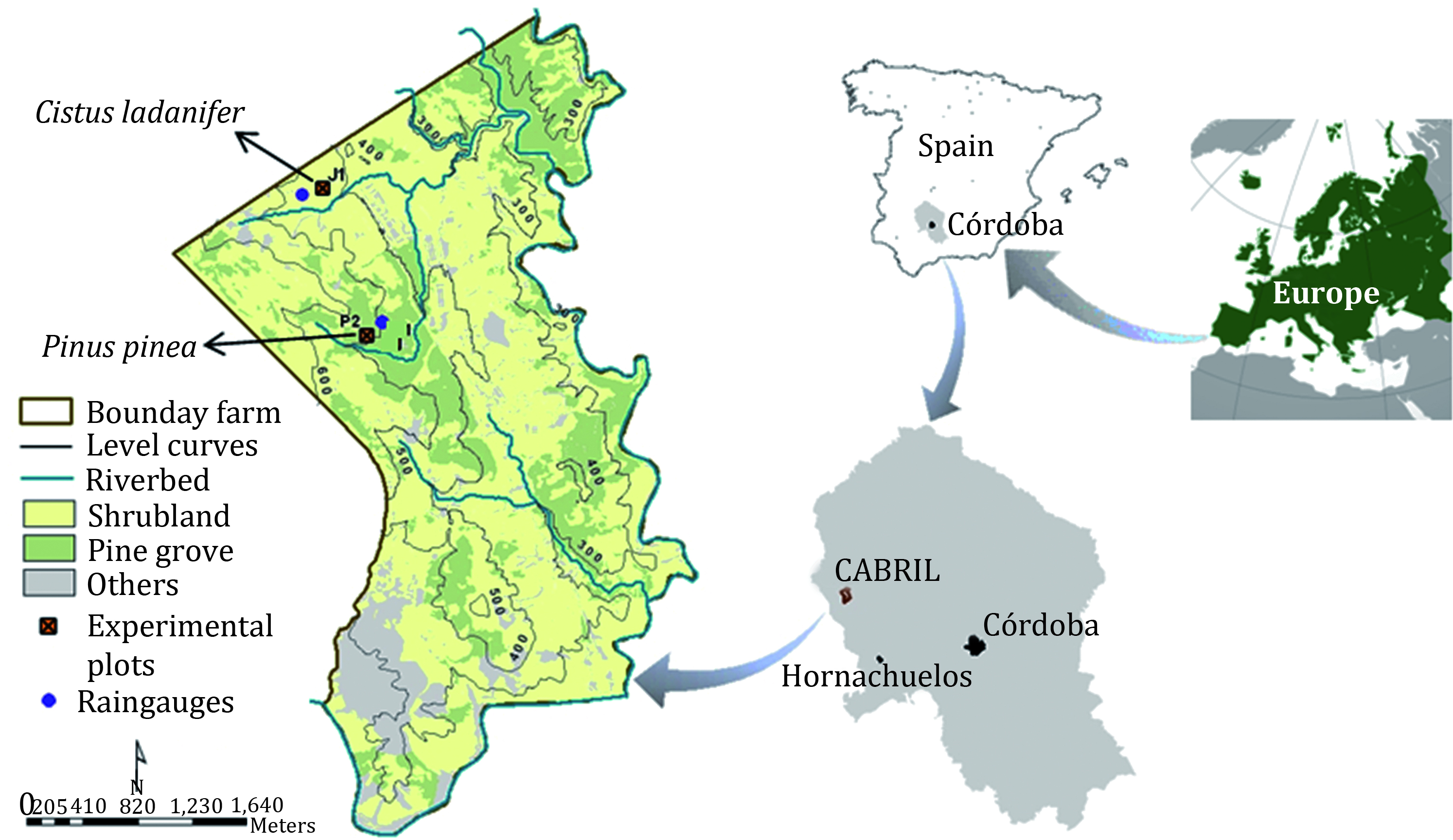Influence of interannual rainfall variability on the interception process in a continental mediterranean climate
Keywords:
Pinus pinea, Cistus ladanifer, southern Spain, canopy reservoir capacity, canopy drying timeAbstract
The interception of rainfall by vegetation greatly affects the hydrology of a basin. The main objective of this paper is to evaluate the effect of annual rainfall variability on the interception in isolated individuals of two of the most common types of vegetation, Pinus pinea and Cistus ladanifer, in a Mediterranean watershed. For this, experimental data were taken for four years and the Rutter interception model was used to calculate the canopy drying time, while Rutter and Klaassen methodologies were used to determine the storage capacity of the canopy. On the whole, 29.6% of rainfall was intercepted for pine, and 17.7% for rockrose. Stemflow accounted for 0.3% for pine and 17% for rockrose, while 70.1% of the rainfall fell as throughfall for pine and 65.3% for rockrose. However, in dry years, the interception percentage almost doubled that of wet years. An average canopy drying time of 9.2 hours was established for pine, and 4.4 hours for rockrose. Approximately equal results of canopy storage capacity were obtained from both methods (1.8 mm for pine and 0.7 mm for rockrose). Both species registered higher values of canopy storage capacity in dry years than in wet years.

Downloads
Published
Issue
Section
License
Aquellos autores/as que tengan publicaciones con esta revista, aceptan las Políticas Editoriales.


